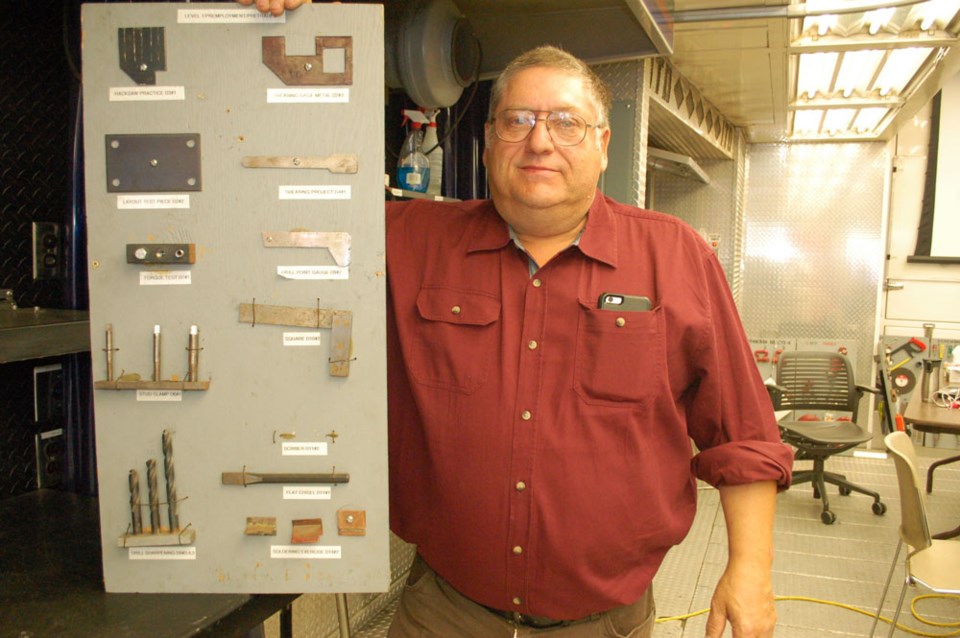For a second consecutive year, an industrial mechanic course is being offered at the Estevan campus of the Southeast College.
“We have eight confirmed students so far,” said Sheena Onrait, the marketing and promotion manager and a spokeswoman for the college who attended the course open house at the college where the industrial mechanic training trailers were parked just outside near the college’s auditorium.
Gerald Neudorf is also back as lead instructor for the 17-week course.
“Industrial mechanics were known as millwrights in many areas of the country before, but for consistency across Canada, we adopted the name change,” he said.
What do industrial mechanics do?
“There is that old saying, we are jack of all trades for the trades. If it rotates, but doesn’t have wheels, we’ll be involved in fixing it, building it, assembling it, maintaining it or repairing it,” he said with a chuckle.
The Estevan-based course is a pre-employment program leading to an applied certificate for accredited apprenticeship.
“The students have an opportunity to discover if they like this particular trade and they build some basic skills on the way to a Level I certification,” Neudorf said.
There are layers of competency that have to be tested with students required to hit a 70 per cent mark of accomplishment in order to continue.
The courses see everyone from professional tradespeople enrolled to expand their knowledge base, to interested hobbyists.
The students enrolled in the Estevan course will begin studies on Sept. 12.
Neudorf said his stack of instructional books and course requirements continue to build from each year to the next as students get into metallurgy and fabrication and tool construction, among other things.
“There is a good balance in the course between theory (bookwork) and hands-on skill-building,” he said. “It’s one of the top 10 trades in Saskatchewan.”
Onrait said the college determines when to offer this course based on a few factors such as the availability of the mobile units (there are four sets of them in the province), availability of instructors and, of course, student interest and actual enrolment potential.
“We have several trades courses underway here in Estevan, from electrical and power engineering and so on,” she said.
Saskatchewan Polytec brokers the program to ensure course materials and programs remain consistent across the province and will be recognized across Canada in the event students continue on to achieve Red Seal status, meaning journeyperson status that is recognized nationally.
“It’s a big plus to be able to bring the courses here, outside of the major cities. We can bring the course to the students instead of making the students go into Regina or Saskatoon or Moose Jaw,” said Neudorf, who was brought out of the retirement ranks to serve as an instructor a few years ago.
“It’s great to offer the opportunity for our students to learn where they live,” said Onrait, who added that most of the students are local. Some will arrive from Regina or Saskatoon because classes were full there and/or they might have family members in Estevan where they can stay while taking the course.
Sometimes the course attracts the mature student, but generally speaking, the ages range from 18 to 25 or a bit older, she suggested. “We will often get a young person who has been in the workforce for a year or two, found out what they want and what they need to keep going to the next level, so they’ll come to us.”
Grading of student skills is an ongoing event, said Neudorf, but a final examination is required that involves both written and hands-on skill testing.
With the completion of the course, the participants will have a very good idea whether or not they wish to continue on this professional path and what will be required later on. In the meantime, they will be trained well enough to be “job ready,” said Neudorf. That is one of the most important steps.



